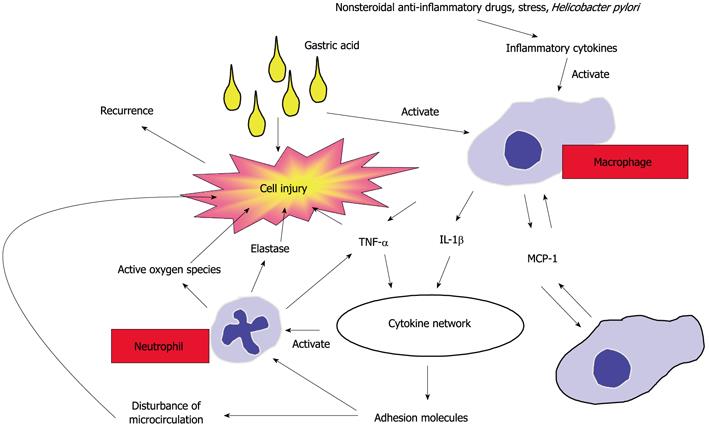Copyright
©2012 Baishideng Publishing Group Co.
World J Gastroenterol. Sep 21, 2012; 18(35): 4811-4822
Published online Sep 21, 2012. doi: 10.3748/wjg.v18.i35.4811
Published online Sep 21, 2012. doi: 10.3748/wjg.v18.i35.4811
Figure 9 Proposed mechanisms of ulcer recurrence.
Ulcerogenic factors such as nonsteroidal anti-inflammatory drugs, stress, and Helicobacter pylori stimulate the production of inflammatory cytokines, which activate macrophages under acidic conditions. The activated macrophages produce monocyte chemotactic protein-1 (MCP-1), which accumulates other macrophages. These macrophages all produce a large amount of interleukin-1β (IL-1β) and tumor necrosis factor α (TNF-α), which activate the cytokine network, resulting in activation of adhesion molecules and neutrophils. Activated neutrophils migrate from arterioles to the interstitial space and injure the tissue with noxious substances such as reactive oxygen species and elastase produced by themselves together with gastric acid (Arakawa et al[25]).
- Citation: Arakawa T, Watanabe T, Tanigawa T, Tominaga K, Fujiwara Y, Morimoto K. Quality of ulcer healing in gastrointestinal tract: Its pathophysiology and clinical relevance. World J Gastroenterol 2012; 18(35): 4811-4822
- URL: https://www.wjgnet.com/1007-9327/full/v18/i35/4811.htm
- DOI: https://dx.doi.org/10.3748/wjg.v18.i35.4811









